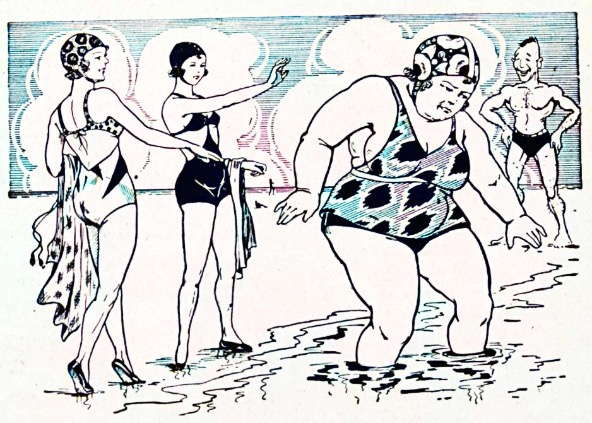
“Take care of your body. It’s the only place you have to live.“
Jim Rohn
Acknowledging the Silent Splendor of Our Body’s Toil
Every day, as we embark on our routines, we rarely take a moment to truly appreciate the tireless and intricate labor our bodies undertake for us. Every breath, every heartbeat serves as evidence of the ceaseless effort our body puts forth, enduring and functioning relentlessly. Our bodies are a testament to nature’s marvel—a complex and sophisticated machinery that performs innumerable tasks every second without any conscious prompting from us. It is high time that we acknowledge and show our gratitude for the incredible work our bodies accomplish on our behalf.
The Harmony of Complex Systems Upholding Our Existence
Our bodies consist of a multitude of intricate systems working in harmony to maintain our vitality. From the immune system’s valiant struggle against diseases to the digestive system’s astute processing of food, each system plays an indispensable role. The seamless coordination among these systems enables us to live, work, and relish life’s pleasures.
In this article, we shall delve into the profound workings of our bodies, illuminating the intricacies and beauty of human biology. We will explore the diverse systems that preserve our existence and the delicate equilibrium they maintain. By comprehending the mechanics of our bodies, we can profoundly appreciate their enduring fortitude and assiduousness.
The Heart’s Role: Beyond a Mere Pump
At the very core of our being, both literally and metaphorically, lies the heart. This vital organ transcends the mere label of a pump; it is the engine propelling our circulatory system, providing every cell in our body with oxygen and nutrients. Each day, our heart dutifully beats around 100,000 times, circulating approximately 2,000 gallons of blood.
The heart embodies endurance, pumping tirelessly without pause to sustain our lives. Its resilience remains steadfast, even under duress, be it during intense exercise or in response to emotional stressors; the heart continues its rhythmic cadence.
Moreover, the heart plays a pivotal role in our body’s defense system. It pumps white blood cells and antibodies—essential components of the immune system—to the sites of infection or injury, bolstering our ability to combat diseases and recover.
The Intricacies of How Our Body Achieves Balance: Homeostasis
One of the most awe-inspiring attributes of our bodies is their capability to uphold balance, known as homeostasis. Homeostasis is the process through which our bodies sustain a stable internal environment despite fluctuations in external conditions. This involves a sophisticated interplay of various systems and mechanisms.
For instance, when we engage in physical activities, our body temperature rises, prompting our bodies to activate sweat glands, aiding in cooling us down. Similarly, when blood sugar levels dip, the pancreas promptly releases insulin to regulate glucose levels in the bloodstream.
Homeostasis is an ever-changing, dynamic process. It is a tribute to our bodies’ extraordinary adaptability and resilience—indispensable for our survival. Without homeostasis, our bodies would be unable to cope with environmental changes, resulting in grave health consequences.
Inhale, Exhale: The Unceasing Labor of the Respiratory System
Our respiratory system, encompassing the lungs and airways, stands as another testament to our body’s remarkable endurance and labor. Each day, we take roughly 20,000 breaths, inhaling life-giving oxygen and exhaling carbon dioxide—a process called respiration, critical for our survival.
Even during moments of repose, our lungs never rest, perpetually expanding and contracting in an unfaltering rhythm, much like the steady ticking of a clock. This seamless and automatic process often goes unnoticed unless we experience shortness of breath or difficulty breathing.
The respiratory system also contributes to regulating our body’s pH balance. Through the modulation of respiration, our bodies can control the amount of carbon dioxide in the bloodstream, affecting its acidity—proof of our body’s remarkable capacity for maintaining homeostasis.
The Digestive System: Extracting Energy and Nutrients
Every morsel of food we consume and every drop of water we drink necessitates processing by our bodies. This crucial task falls to our digestive system—a complex network of organs that dissects food into its constituent nutrients is absorbed into the bloodstream, and utilized by our cells for energy and growth.
Our digestive system persistently labors to process the food we ingest. Beginning with the mouth, where food undergoes breakdown through chewing and saliva, it travels down the esophagus and into the stomach, where it undergoes further decomposition through stomach acid. The partially digested food then proceeds to the small intestine, where the nutrients are assimilated. Any undigested material passes into the large intestine, where water is absorbed, and the remaining waste is expelled from our bodies.
This process stands as a cornerstone of our survival, ensuring the extraction of essential nutrients and energy from our sustenance. It is another manifestation of the diligent labor our bodies undertake day in and day out.
The Endurance of the Immune System: Unseen Struggles Against Invaders
Our bodies constantly face threats from a myriad of external assailants, including bacteria, viruses, parasites, and toxins. The defense against these invasions falls to our immune system—an intricate network of cells, tissues, and organs cooperating to protect us from diseases.
Our immune system remains ever-vigilant, springing into action at the first sign of an invader. It is an unwavering warrior, fighting silent battles to maintain our well-being, unyielding even in the face of unseen adversaries. Its tenacity and resilience enable it to adapt and learn from each encounter with disease.
The immune system’s endurance testifies to its ceaseless commitment to keeping us healthy, relentlessly working day and night. Its remarkable ability to bounce back, even after a severe illness, further exemplifies its indomitable nature.
Our Body’s Response to Stress and Recovery
Our bodies are far from passive recipients of external stressors; they are active responders adept at adapting to and recovering from stress. This is evident in our body’s response to physical stress, such as exercise or injury, as well as emotional stress.
During exercise, our bodies respond by increasing heart rate and respiration, delivering additional oxygen and nutrients to our muscles. Following physical exertion, our bodies initiate a recovery phase, repairing damaged tissues and fortifying muscles to better withstand future challenges—a process known as adaptation that enhances our strength and resilience.
Likewise, when confronted with emotional stress, our bodies activate the stress response, also known as the fight-or-flight response. This results in a series of physiological changes, including heightened heart rate and blood pressure, preparing us to confront or escape from perceived threats. Once the threat dissipates, our bodies return to a state of rest and recovery.
The Nervous System: Our Body’s Astute Communication Network
The nervous system serves as our body’s sophisticated communication network, transmitting signals between different parts of the body. Comprising the central nervous system, which includes the brain and spinal cord, and the peripheral nervous system, consisting of nerves connecting the central system to the rest of the body, it enables an array of crucial functions.
Our nervous system perpetually labors, transmitting signals that regulate activities ranging from heartbeats and breathing to movements and thoughts. It is a marvel of biological engineering, conveying signals at remarkable speeds.
Moreover, the nervous system plays a pivotal role in our body’s response to stress and recovery. Responsible for activating both the stress response and the relaxation response, it aids us in recuperating from stressful situations—evidence of the astonishing fortitude and diligence of our bodies.
The Endocrine System: Orchestrating Our Body’s Symphony
The endocrine system, a network of glands producing and secreting hormones—chemical messengers—regulates a plethora of our body’s functions, including growth, metabolism, mood, and stress.
Our endocrine system operates ceaselessly, releasing hormones in response to changes within our bodies and surroundings. This finely tuned mechanism precisely adjusts to maintain our bodies’ equilibrium.
The endocrine system also plays a pivotal role in our body’s response to stress and recovery. Releasing stress hormones like cortisol helps us cope with stress, while the secretion of recovery hormones like growth hormone aids us in healing and recuperation.
The Skeletal and Muscular Systems: A Sturdy Support and Fluid Motion
Our skeletal and muscular systems collaborate to provide support for our bodies and facilitate movement. The skeletal system serves as the framework, shielding our organs and offering attachment points for our muscles. Meanwhile, the muscular system, boasting over 600 muscles, enables us to move and perform various physical tasks.
Even during moments of rest, these systems remain active. Our muscles diligently maintain our posture and stabilize our joints while our bones continually undergo remodeling, with old bone breaking down and new bone forming.
These systems epitomize the incredible resilience and diligence of our bodies. They function to support, mobilize, and enable us to interact with our environment, exhibiting remarkable efficiency and precision.
The Importance of Rest: Revitalization and Restoration
While our bodies undoubtedly showcase remarkable endurance and diligence, they also necessitate rest. Rest holds vital significance, as it fosters revitalization and restoration. It is during these periods of reprieve that our bodies recuperate from daily stresses, repair damaged tissues, and prepare for the challenges ahead.
Of all forms of rest, sleep assumes particular importance, as it initiates a state of deep repose and recuperation, vital for several crucial functions. This includes the repair of damaged tissues, consolidation of memories, and the release of hormones regulating growth and stress.
Rest transcends mere luxury; it is an absolute necessity for our well-being, as pivotal to our health as nutrition and exercise. It stands as a corroboration to the innate wisdom of our bodies, recognizing when to labor and when to grant themselves respite.
Nurturing Our Body: Supporting Its Silent Tenacity
Grasping the extent of our body’s labor and endurance instills a profound appreciation for these remarkable entities. However, appreciation alone is insufficient. It is imperative that we nurture and support our bodies, recognizing and honoring their hard work.
This entails embracing a healthy lifestyle—comprising a balanced diet, regular exercise, and adequate rest. It also involves managing stress, as the burden of stress can undermine our bodies’ functioning and recovery.
Caring for our bodies is not merely about preventing illnesses or extending life; it constitutes an act of reverence—an acknowledgment of their relentless commitment and enduring perseverance.
Let us celebrate the marvel of our bodies, recognizing their ceaseless efforts and honoring their remarkable resilience.
Final Thoughts: A Tribute to the Resilience of Our Body
Our bodies exemplify the marvels of nature—a testament to the magnificence of evolution and the intricate web of life. Unceasingly, they toil, sustaining and breathing life into our existence. They adapt to stress, recover from adversities, and courageously fight against unseen foes. They are the unsung heroes in the symphony of our lives—the silent warriors deserving of our gratitude.
So, let us raise a toast to our bodies—to their unwavering dedication and indomitable tenacity. Let us honor the intricately interconnected systems that safeguard our lives, their unwavering endurance, and the captivating wonder of human biology. May we forever cherish, respect, and support these extraordinary bodies, recognizing the phenomenal work they perform on our behalf.
Where would we be without our bodies? Not here, love yours.
Be sure not to miss any of Solitude Reflections and join our email list! And don’t forget to check out the calming meditations on the Breathe page. Above all, share any insights on these miraculous bodies of ours by clicking ‘Comments’ at the top. Your feedback is essential and valued.
Until next time, stay well out there and say thank you to your wonderful body. Unique to you.
With love, Gael
Written on the Shoshone-Bannock Ancestral Lands in Eastern Idaho




Beautiful.
Beautiful.
Oh, to just practice and live and love in agape's shield.
Deeply moving article. Suicide affects so many. I've had two people I was veryclose to, take their lives by suicide.…
I deeply enjoy your musings. To this one I reply, body shaming in our techno world is chronic. And social…